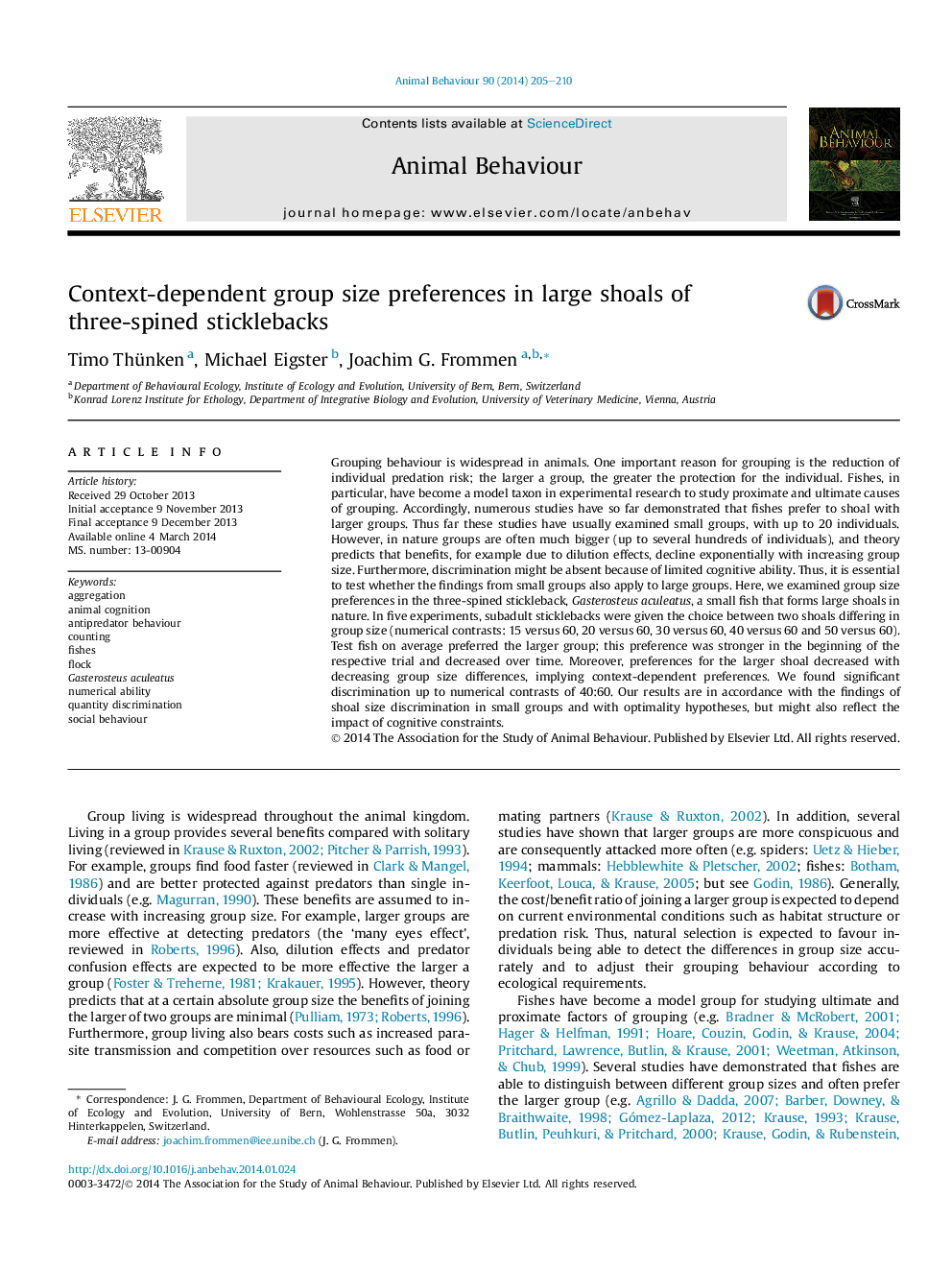| کد مقاله | کد نشریه | سال انتشار | مقاله انگلیسی | نسخه تمام متن |
|---|---|---|---|---|
| 2416391 | 1552238 | 2014 | 6 صفحه PDF | دانلود رایگان |
• Sticklebacks were given the choice between two large shoals differing in group size.
• Preferences for the larger shoal decreased with decreasing group size differences.
• We found significant discrimination up to numerical ratios of 3:2.
• Fish optimally adjust preferences according to the expected benefits.
Grouping behaviour is widespread in animals. One important reason for grouping is the reduction of individual predation risk; the larger a group, the greater the protection for the individual. Fishes, in particular, have become a model taxon in experimental research to study proximate and ultimate causes of grouping. Accordingly, numerous studies have so far demonstrated that fishes prefer to shoal with larger groups. Thus far these studies have usually examined small groups, with up to 20 individuals. However, in nature groups are often much bigger (up to several hundreds of individuals), and theory predicts that benefits, for example due to dilution effects, decline exponentially with increasing group size. Furthermore, discrimination might be absent because of limited cognitive ability. Thus, it is essential to test whether the findings from small groups also apply to large groups. Here, we examined group size preferences in the three-spined stickleback, Gasterosteus aculeatus, a small fish that forms large shoals in nature. In five experiments, subadult sticklebacks were given the choice between two shoals differing in group size (numerical contrasts: 15 versus 60, 20 versus 60, 30 versus 60, 40 versus 60 and 50 versus 60). Test fish on average preferred the larger group; this preference was stronger in the beginning of the respective trial and decreased over time. Moreover, preferences for the larger shoal decreased with decreasing group size differences, implying context-dependent preferences. We found significant discrimination up to numerical contrasts of 40:60. Our results are in accordance with the findings of shoal size discrimination in small groups and with optimality hypotheses, but might also reflect the impact of cognitive constraints.
Journal: Animal Behaviour - Volume 90, April 2014, Pages 205–210
